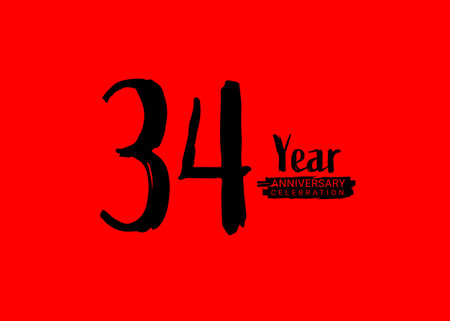Introduction: Candlemas in the British Calendar
Candlemas, observed on the 2nd of February, is a date that sits quietly yet firmly within the traditional British calendar. While it may not enjoy the same fanfare as Christmas or Easter, its roots run deep in the rural psyche of Britain. Historically marking the midpoint between the winter solstice and spring equinox, Candlemas has long been regarded as a pivotal turning point in the agricultural year. For centuries, it signified not only a religious festival commemorating the Presentation of Christ at the Temple but also an important milestone for farmers and countryfolk monitoring the gradual change of seasons. The day’s significance is woven into the rhythm of rural life—serving as a marker by which people would assess whether winter was loosening its grip or had more harsh weather to deliver. As such, Candlemas occupies a unique space in British folklore, blending spiritual observance with practical concerns about weather, farming, and fortune for the year ahead.
2. Historical Roots of Candlemas Traditions
Candlemas, observed on the 2nd of February, sits at a fascinating crossroads of Christian ritual and much older pagan practice in Britain. The origins of this midwinter festival can be traced back to pre-Christian times, when rural communities marked the turning of the seasons with ceremonies designed to ensure the return of light and warmth. With the gradual spread of Christianity across the British Isles, these ancient customs were reinterpreted and absorbed into the liturgical calendar as Candlemas, also known as the Feast of the Presentation of Christ in the Temple.
Pagan Beginnings and Seasonal Significance
Long before Candlemas was associated with church candles and the Virgin Mary, Britons celebrated Imbolc, a Celtic festival dedicated to Brigid, goddess of fire and fertility. Imbolc marked the halfway point between winter solstice and spring equinox—a crucial moment for agricultural societies anxiously awaiting signs of renewal. Bonfires, torchlight processions, and offerings to invoke the lengthening days were all common features. These pagan themes persisted even as Candlemas took on its Christian meaning.
Integration with Christian Practice
When Christianity gained prominence, early church leaders often adapted local traditions rather than suppressing them outright. Candlemas became a day for blessing candles—the symbol of Christ as “the light of the world”—and holding processions that echoed earlier pagan rites. Rural parishes across England, Scotland, and Wales would gather for special services followed by communal meals or fairs, blending sacred observance with folk celebration.
Comparing Pagan and Christian Elements
| Element | Pagan (Imbolc) | Christian (Candlemas) |
|---|---|---|
| Date | Early February | 2nd February |
| Main Symbol | Fire/Brightness | Blessed Candles |
| Deity/Focus | Brigid (goddess) | Mary & Christ Child |
| Key Rituals | Bonfires, Offerings | Candle Blessing, Procession |
This intertwining of belief systems is key to understanding why Candlemas remains such a potent date in British rural folklore. The day’s mixed heritage—rooted both in practical agricultural concerns and in spiritual hopes for light’s return—has provided fertile ground for superstitions about weather and fate that persist into modern times.
![]()
3. The Saying Goes: Weather Lore and Proverbs
When it comes to Candlemas, rural communities across Britain have long relied on a store of traditional sayings and proverbs to predict the weather for the rest of the year. These age-old lines are not just idle chatter—they reflect centuries of careful observation and folk wisdom passed down from generation to generation. One of the most well-known Candlemas proverbs is, “If Candlemas Day be fair and bright, winter will have another flight; but if Candlemas Day be clouds and rain, winter is gone and won’t come again.” This succinct rhyme encapsulates a widespread belief: a sunny Candlemas warns that more wintry weather is on its way, while a gloomy, wet day suggests that spring is just around the corner.
Similar versions crop up across regions in England, Scotland, and Wales, each with their own local flavour. In Yorkshire, one might hear, “If Candlemas Day is clear and fine, the worst of winter’s left behind,” echoing the hopeful tone found in other counties. Scottish lore sometimes sharpens the prediction: “If Candlemas Day is bright and clear, there’ll be two winters in the year.” These sayings served as a practical tool for farmers and villagers when planning everything from lambing seasons to hedge-laying or seed-sowing.
The persistence of these proverbs demonstrates how deeply embedded weather lore is within British culture—especially in rural areas where daily life was (and often still is) closely tied to the land. Even today, many people find themselves glancing out on 2nd February and recalling these rhymes, half in jest but half with genuine curiosity about what the old wisdom might reveal about the months ahead.
4. Regional Variations in Belief
Across the British Isles, Candlemas weather lore is as diverse as the landscapes it emerges from. While the central belief—using Candlemas Day weather to predict the year’s fortunes—remains consistent, regional variations in sayings, superstitions, and interpretations abound. These differences reflect local climates, agricultural practices, and longstanding folk traditions.
England
In England, especially in rural counties, the Candlemas rhyme often goes:
If Candlemas Day be fair and bright,
Winter will have another flight.
If Candlemas Day brings cloud and rain,
Winter won’t come again.
This version is particularly common in the Midlands and southern England, where early spring weather greatly impacts farming activities. Here, a sunny Candlemas is seen as an ill omen, foretelling more cold snaps ahead.
Scotland
Scottish lore closely aligns with English tradition but adds its own poetic flair:
If Candlemas Day is bright and clear,
There’ll be two winters in the year.
In Scotland’s harsher climate, these proverbs carry added weight for shepherds and crofters who remain vigilant for late snowfalls. Some Scottish communities even observe a “second winter” if Candlemas dawns fine and crisp.
Wales
Welsh traditions are interwoven with ancient customs. The Welsh saying:
Os bydd hi’n braf ar Ddydd Gŵyl Fair,
Ceir gaeaf arall i’w gael.
(If it is fine on Mary’s Day [Candlemas], another winter is to come.) In rural Wales, where sheep-farming dominates, this superstition influences when farmers expect lambing seasons to begin in earnest.
Northern Ireland
Northern Irish lore echoes both English and Gaelic influences. A typical saying might be:
If Candlemas Day is wet and foul,
Half o’ winter’s gone at Yule.
This reflects a hope that poor weather signals an early end to winter—a vital concern for those dependent on early planting or livestock health.
Candlemas Weather Lore Across Regions
| Region | Typical Saying | Interpretation |
|---|---|---|
| England | If Candlemas Day be fair and bright, Winter will have another flight. | Clear weather predicts a longer winter. |
| Scotland | If Candlemas Day is bright and clear, There’ll be two winters in the year. | A fine day means more cold spells to come. |
| Wales | Os bydd hi’n braf ar Ddydd Gŵyl Fair… | Good weather means another winter awaits. |
| Northern Ireland | If Candlemas Day is wet and foul… | Poor weather suggests winter is ending soon. |
Such regional nuances not only highlight the adaptability of folklore but also underscore how each community relates uniquely to the land and its seasonal rhythms. While modern meteorology has largely replaced these old beliefs, many rural Britons still keep an eye on Candlemas skies—and quietly recall what their grandparents once observed.
5. Farmers, Folklore, and the Fate of the Crops
For generations, rural communities across Britain have woven Candlemas traditions into the fabric of their agricultural calendars. The day itself—marking the midpoint between winter solstice and spring equinox—served as a natural checkpoint for farmers to reflect on the seasons progress and make crucial decisions about the coming months. In villages from Cornwall to Cumbria, weather on Candlemas was closely watched: a bright, clear day often sparked concern that winters grip would linger, while a dull, wet day brought hope for an early spring and a bountiful harvest. This blend of superstition and practical observation was more than mere old wives tales; it represented an empirical approach rooted in lived experience.
Farmers would frequently consult traditional rhymes and local proverbs—such as “If Candlemas Day be fair and bright, winter will have another flight”—to guide everything from livestock management to when to sow certain seeds. These sayings acted as mnemonic devices, helping communities pass hard-earned agricultural wisdom down through generations. For example, some regions delayed planting barley or oats if Candlemas dawned with sunshine, anticipating cold snaps ahead. Others took a gloomy Candlemas as a green light to begin preparations for lambing or ploughing.
The significance of Candlemas in rural Britain went beyond simple weather prediction; it fostered communal decision-making and collective memory. Villagers might gather at local churches after services to share observations and discuss plans for the fields. This collaborative spirit reinforced community bonds while enhancing everyone’s chances of a successful growing season. The reliance on folklore also reflected the unpredictability of British weather—a force both respected and feared by those whose livelihoods depended on it.
Even as modern meteorology has eclipsed much of this folk knowledge, echoes persist in countryside traditions and seasonal festivals. In some areas, farmers still refer back to Candlemas lore when making planting schedules or tending livestock. These enduring customs serve not only as a link to the past but also as a reminder of how closely tied rural life once was to nature’s rhythms—and how keenly people sought signs in sky and soil to secure their crops’ fate.
6. Candlemas Superstitions and Their Enduring Legacy
Despite the march of modernity and the decline of overt superstition, Candlemas continues to hold a subtle yet persistent place in the tapestry of British rural life. While few may now anxiously watch for sunshine or shadow on 2nd February, echoes of ancient belief still surface in local customs and annual rituals. In some villages, church services on Candlemas remain well-attended, with candles blessed and distributed—a nod to both religious tradition and the old hope for protection against winter’s dangers. Elsewhere, agricultural communities quietly observe the day as a marker for turning the soil or tending to livestock, actions often accompanied by murmured references to “old wives’ tales” about weather and luck.
The endurance of such rituals reveals something fundamentally British: a respect for continuity and an affection for the eccentricities of local lore. Some rural families still refer to Candlemas rhymes when planning gardens or anticipating storms, blending inherited wisdom with contemporary meteorological advice. These superstitions, though less influential than in centuries past, foster a sense of identity and belonging—reminding people of their connection to both land and ancestors.
Moreover, community events around Candlemas have been adapted rather than abandoned. Wassailing ceremonies, lantern walks, or special suppers serve as opportunities for villages to gather in the dark days of winter, strengthening social ties and passing down stories. Even sceptics who scoff at predictions based on shadows may join in these traditions for their warmth and conviviality.
Ultimately, the persistence of Candlemas superstitions within British rural life illustrates how folklore evolves rather than disappears. Old beliefs are repurposed to fit modern sensibilities, sometimes recast as harmless fun or heritage rather than genuine divination. Yet beneath this transformation lies an enduring fascination with nature’s cycles—and perhaps a quiet hope that a candle’s glow can still light the way through uncertain seasons.

